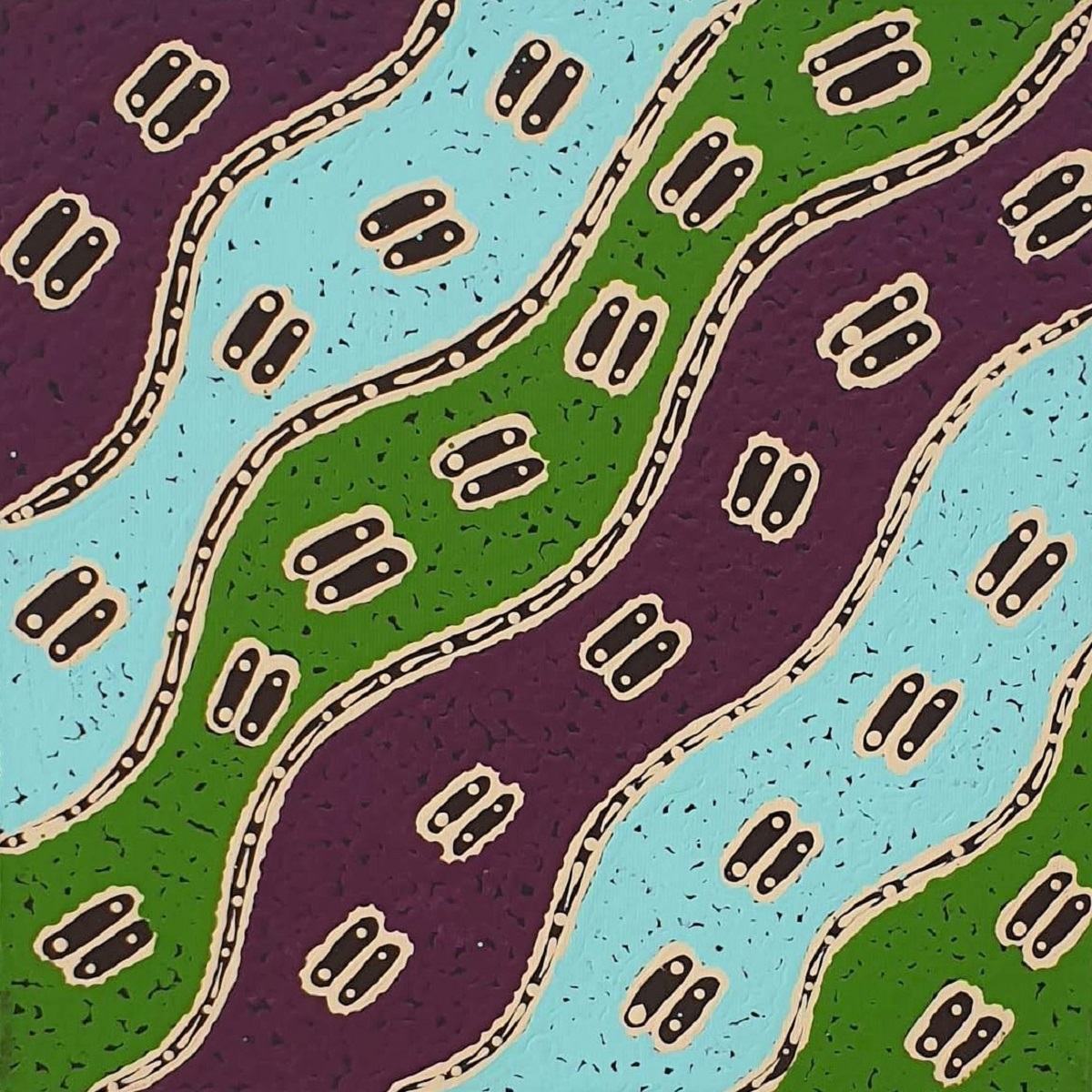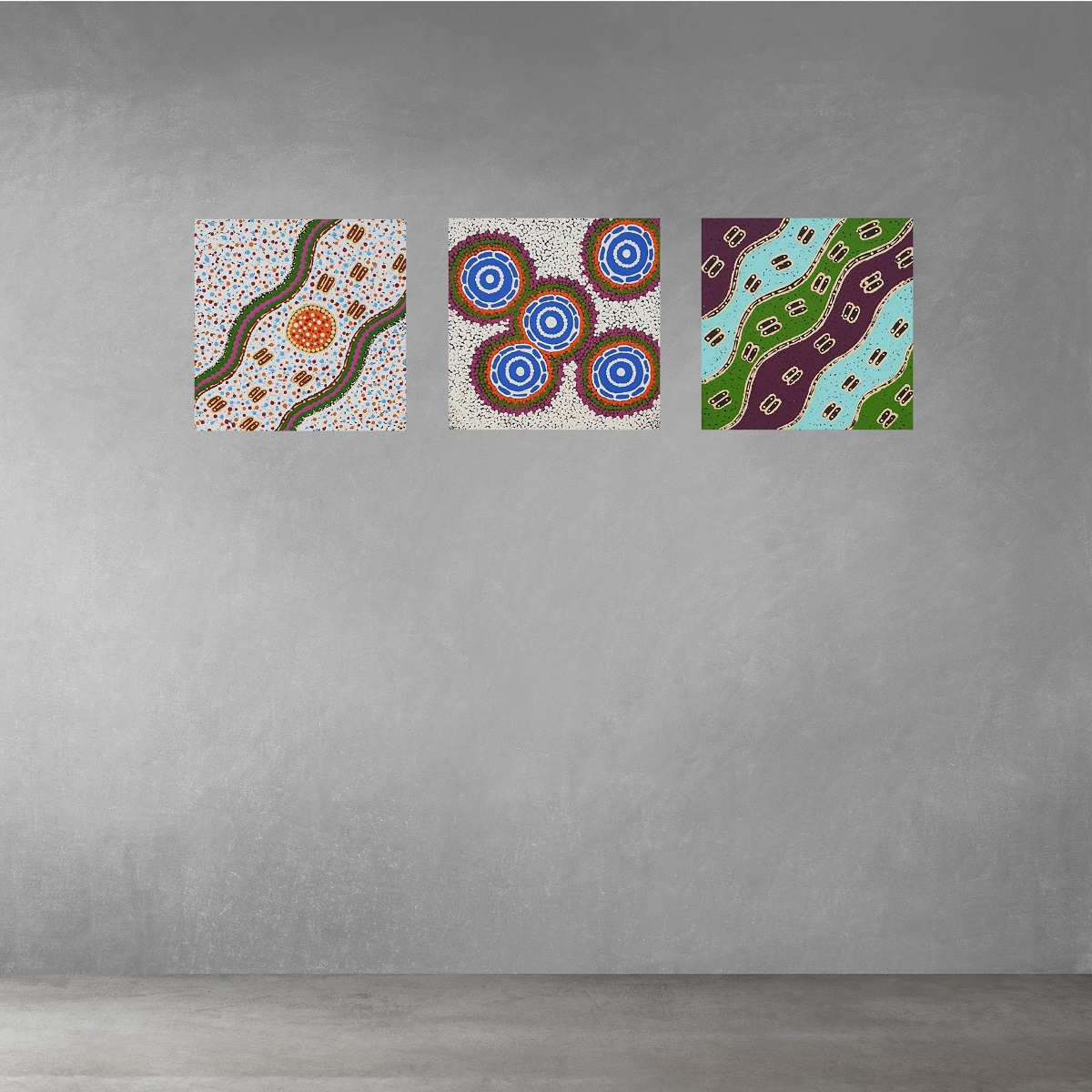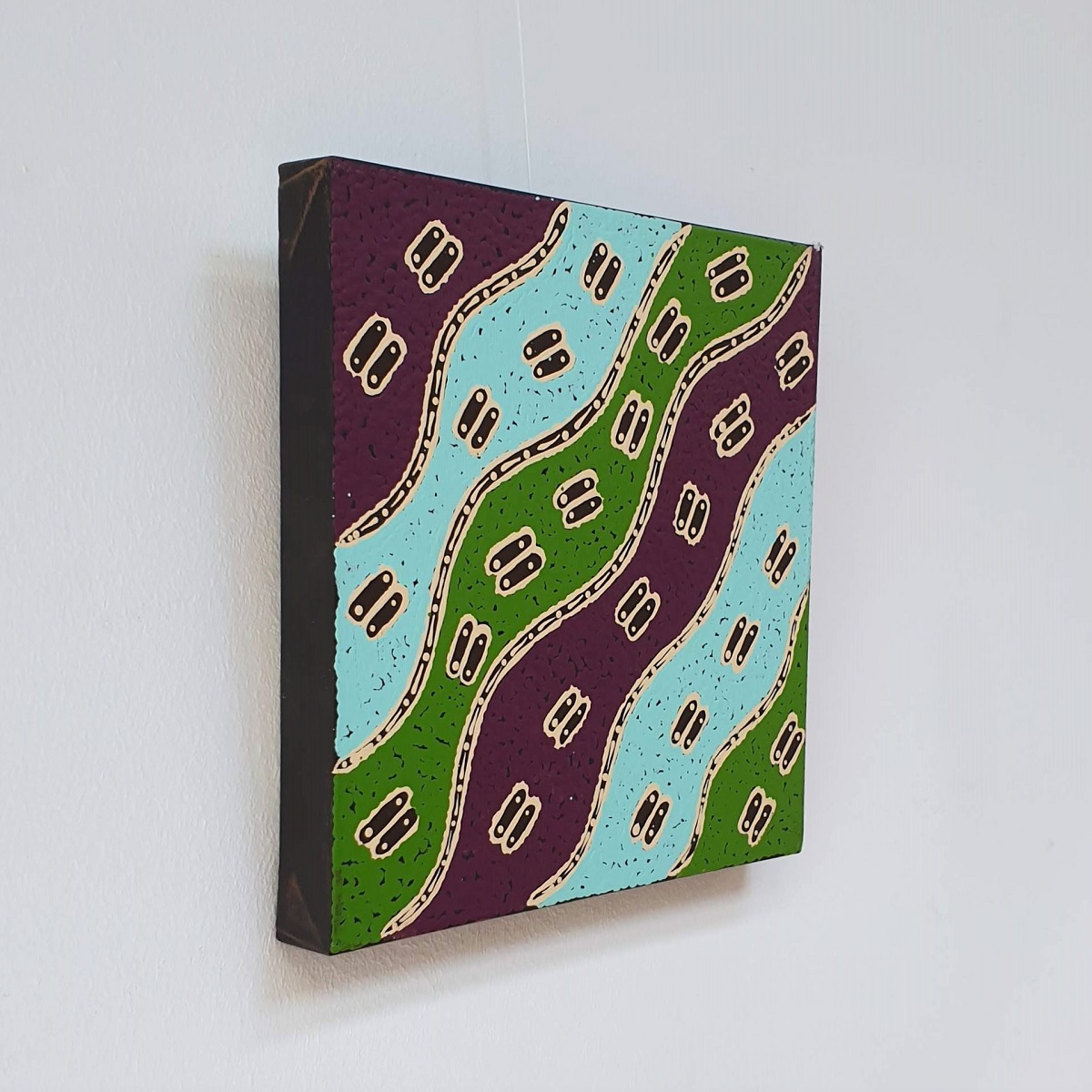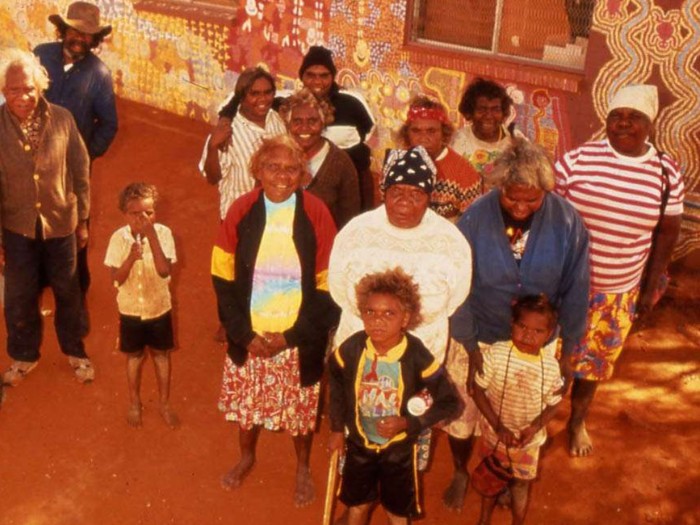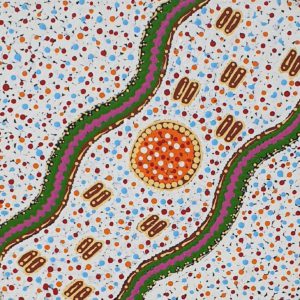Story (Theresa Napurrurla Ross)
This painting depicts the Pamapardu Jukurrpa (Flying Ant Dreaming) from Warntungurru, west of Yuendumu. ‘Pamapardu’ is the Warlpiri name for the flying ants or termites that build the large anthills found throughout Warlpiri country. This country belongs to Nakamarra/Napurrurla women and Jakamarra/Jupurrurla men. ‘Pamapardu’ are flying ants. They build earth mounds (‘mingkirri’) that are common in the Tanami area.


